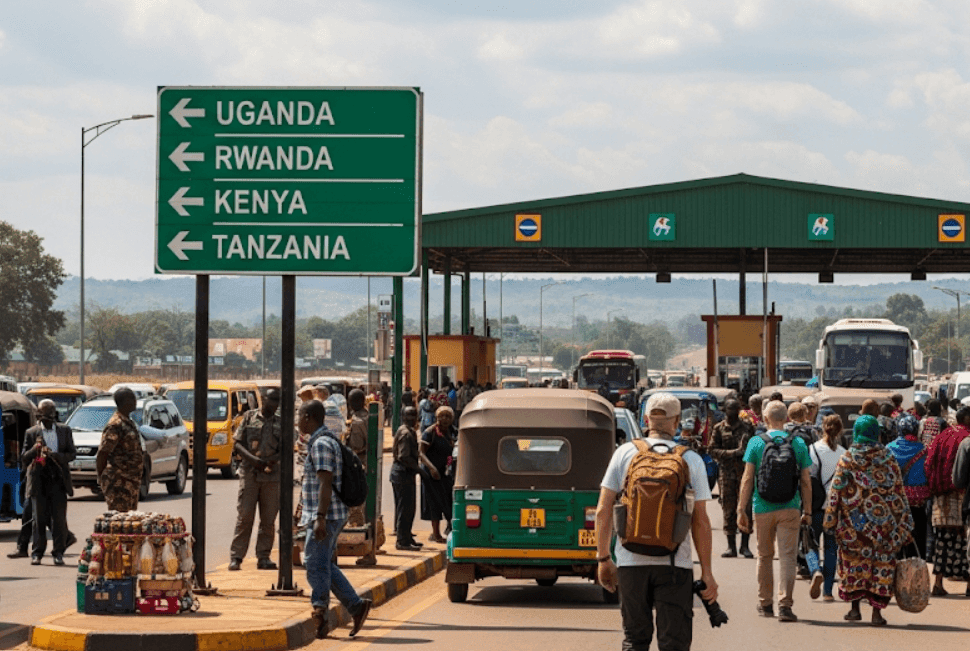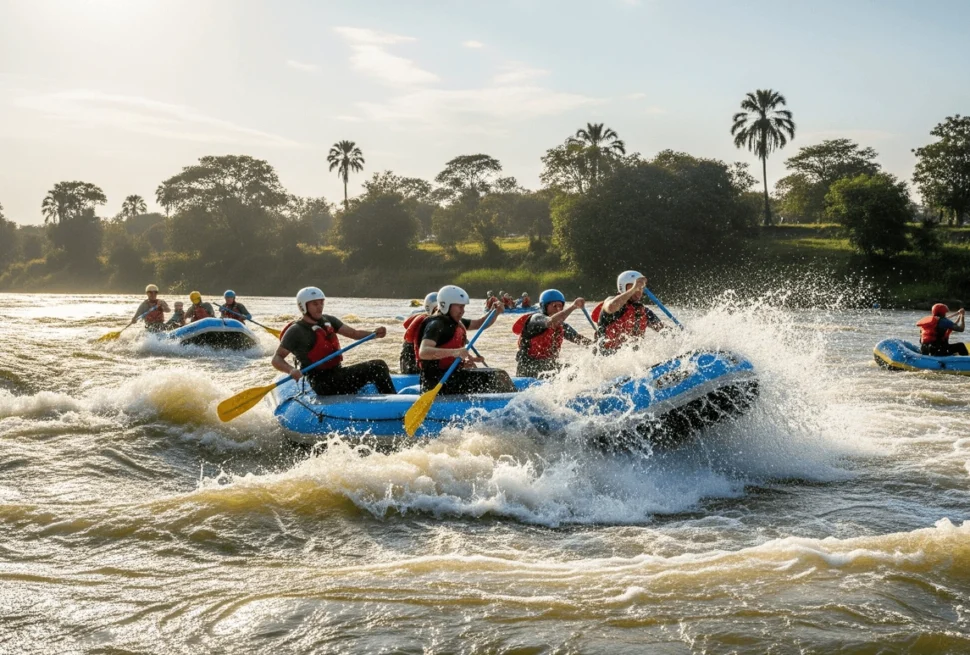There’s something primal about being out in the wild after sunset. Your senses sharpen. Every sound becomes amplified. And suddenly, the bush isn’t just alive — it’s electric.
While most game drives in Uganda happen during daylight, night safaris offer a completely different kind of thrill. This is when the nocturnal world comes alive: hyenas cackle in the dark, bush babies blink down from trees, and elusive predators begin their hunt.
But where exactly is the best place in Uganda to experience this after-dark magic?
Let’s shine a light on it.
Key Takeaways
- Lake Mburo National Park offers Uganda’s most consistent and accessible night game drives.
- You might spot leopards, hyenas, bush babies, genets, porcupines, and more.
- Night safaris are only permitted in parks where Uganda Wildlife Authority allows it.
- Specialized guides and spotlights are used to track nocturnal animals.
- It’s a rare and unforgettable addition to any Uganda safari itinerary.
Why Go On Night Safaris?
Most animals in Uganda are diurnal — active by day — but some of the most fascinating species are creatures of the night. And unless you’re up for tracking with infrared cameras or camping deep in the wild (which, frankly, isn’t legal in most parks), your best bet is a guided night game drive.
Night safaris allow you to witness behaviors and species you’d never see otherwise. You’re not just ticking off sightings — you’re observing nature’s secret shift change.
Lake Mburo: Uganda’s Best Night Safari
If you’re looking for the best place for a night game drive in Uganda, Lake Mburo National Park is it.
It’s the only park in the country where night drives are officially sanctioned and reliably offered. The park’s open savannah and acacia woodlands create ideal conditions for spotting nocturnal animals, and its relatively low predator density makes it one of the few parks where night excursions are logistically feasible.
What You Might See:
- Leopards (often seen!)
- Spotted hyenas
- White-tailed mongooses
- Bush babies (look for glowing eyes)
- Civets and genets
- Porcupines
- Owls and nightjars
Night drives here typically begin around 6:30–7:00 PM and last two to three hours, depending on conditions and sightings. The best ones are guided by seasoned Uganda Wildlife Authority rangers who understand how to track and interpret signs in the dark.
Other Spots With Potential (But Not Official)
While Lake Mburo is the gold standard, a few private concessions and lodges near Queen Elizabeth National Park and Murchison Falls National Park sometimes offer evening bush experiences. These are more ambient than focused — think sundowners with a spotlight on the way back — but they’re worth asking about.
Note: Official night game drives in Bwindi, Kibale, or Mgahinga are not permitted due to the dense forest terrain and conservation regulations. But you can still spot nocturnal primates like bush babies or potto during guided forest walks around certain lodges.
What to Expect on a Night Drive
- Specialized lighting: High-powered red-filtered spotlights help spot animals without disturbing them.
- Open-roof 4x4s: Guides will often use modified safari vehicles to improve visibility.
- Cooler temperatures: Dress warmly — the bush gets surprisingly chilly after sunset.
- Silent anticipation: Unlike day drives, there’s less chatter. The atmosphere is hushed, electric, and intimate.
Night Safari Tips From the Field
1. Choose your timing carefully. The best months for safari in Uganda also apply here. Dry seasons (Dec–Feb and Jun–Aug) offer clearer skies and better road conditions.
2. Stay close to the park. We recommend booking a lodge within or right beside Lake Mburo for easy access. Arrivals after dusk aren’t permitted at most park gates.
3. Book in advance. Night drives aren’t always available last-minute. They require approval, spotlights, and ranger scheduling — especially in peak season. See our guide on how far in advance you should book a safari.
4. Don’t expect volume — expect quality. You may see fewer animals than during the day, but what you do see will be exceptional. It’s about mystery, not numbers.
Night Safari vs. Other Unique Experiences
If you’re drawn to unique wildlife encounters, don’t stop at night drives. Consider:
- Mabamba Swamp for pre-dawn shoebill tracking.
- Ngamba Island Chimpanzee Sanctuary for observing chimps at feeding time.
- Ziplining in Mabira Forest if you’re craving adrenaline with a canopy view.
- Forest walks in Kibale for chances to see nocturnal primates like bush babies or galagos.
Also worth noting: Primates in Uganda Beyond Gorillas and Chimps includes some charming night-time characters.
Responsible Night Driving
It’s important to note that night safaris are tightly regulated to protect wildlife. Only specific vehicles and guides are licensed to run them. If you’re interested in conservation ethics, you might enjoy our piece on responsible travel in Uganda — a good read before planning any safari.
Night game drives in Uganda are rare, beautiful, and worth every second. If you’re planning a custom trip and want to add this experience to your itinerary, request a quote and we’ll tailor it to your travel style.
Let the wild surprise you — even after sunset.
Frequently Asked Questions
Can I do a night game drive in Bwindi or Kibale?
No. These are protected forest habitats where night drives aren’t allowed. But some lodges may offer short forest walks to spot nocturnal primates.
Is it safe to do a night safari in Uganda?
Yes — when conducted with a licensed guide inside permitted areas like Lake Mburo. Safety briefings are always provided before departure.
How much does a night game drive cost?
Prices vary, but expect around $40–$50 per person, not including vehicle or guide fees. Park entry is separate.
Do I need special equipment?
Nope. Just warm layers, a sense of adventure, and maybe binoculars if you want sharper views. Cameras with good low-light performance help.
Are night safaris suitable for children?
That depends on your child’s temperament. If they’re curious, patient, and okay with being quiet in the dark — absolutely.





